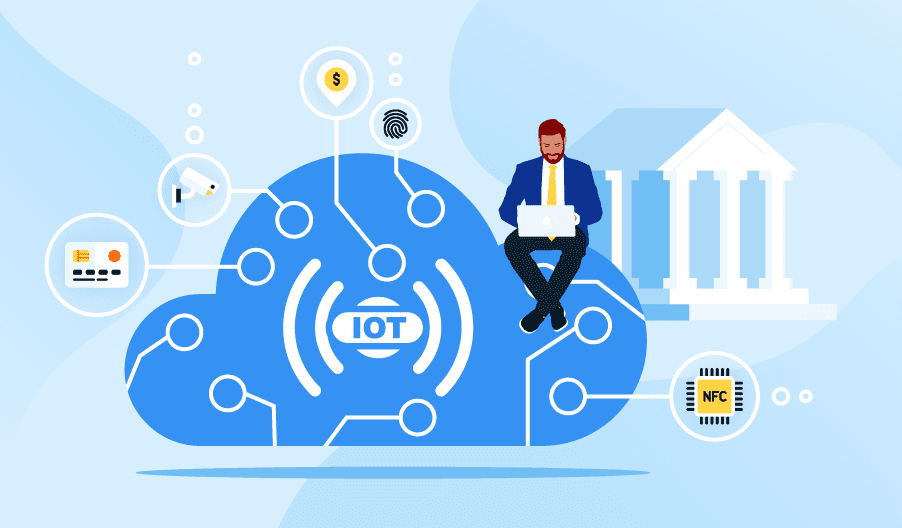Editor’s note: In this article, Borisdescribes the role and advantages of IoT for banking and finance and provides examples of how companies adopt IoT solutions to advance their banking services. ScienceSoft’s Internet of Things (IoT) team will help you discover and customize numerous IoT opportunities for your business, just let us know.

The Internet of Things (IoT) is an advanced technology that enables networks of connected devices (e.g., sensors, cameras, smart gadgets) to collect real-time data, transfer it to the cloud for processing and analysis, and react to events in real-time. IoT plays an important role in banking and finance, ensuring efficient data collection and processing and supporting digital automation of key processes. With IoT-enabled solutions, BFSI companies can optimize their services and operations, enhance the security of transactions, and offer cutting-edge customer experience.
What are the Advantages of IoT for Banking and Finance?
improved customer view & personalized customer experience. IoT solutions collect and process customer data (regular payment locations, consumer preferences, driving behavior, etc.) that help BFSI businesses learn more about their clients and identify their needs and risks. With detailed and up-to-date customer profiles, BFSI companies can personalize customer interaction, offer targeted services, and provide relevant financial assistance.
Automation. IoT-powered systems can automatically perform certain operations: process requests, open bank accounts, disable credit cards, etc., thus minimizing human intervention and, as a consequence, human errors.
Enhanced security. IoT helps connect and remotely control CCTV cameras, smart alarm systems, vehicle telematics, and other monitoring technologies to ensure the 24/7 security of property and equipment (offices, ATMs, CIT vehicles, etc.) and send alerts in case of malicious activity. IoT is also a driver of cybersecurity: wearable devices enable user authentication via fingerprints, retinal scans, and face IDs when customers make payments via mobile apps.
Fraud detection. IoT coupled with AI-powered analytics helps identify fraud and hacker attacks by collecting and analyzing user account data. If suspicious activities are detected, the user can be promptly alerted, and their account – is temporarily disabled.
One-touch payments. Thanks to the integration of banking IoT solutions and wearables, users can make payments without using their credit or debit cards directly. NFC-powered devices, such as smartphones and smartwatches, enable contactless payments for seamless financial transactions.


